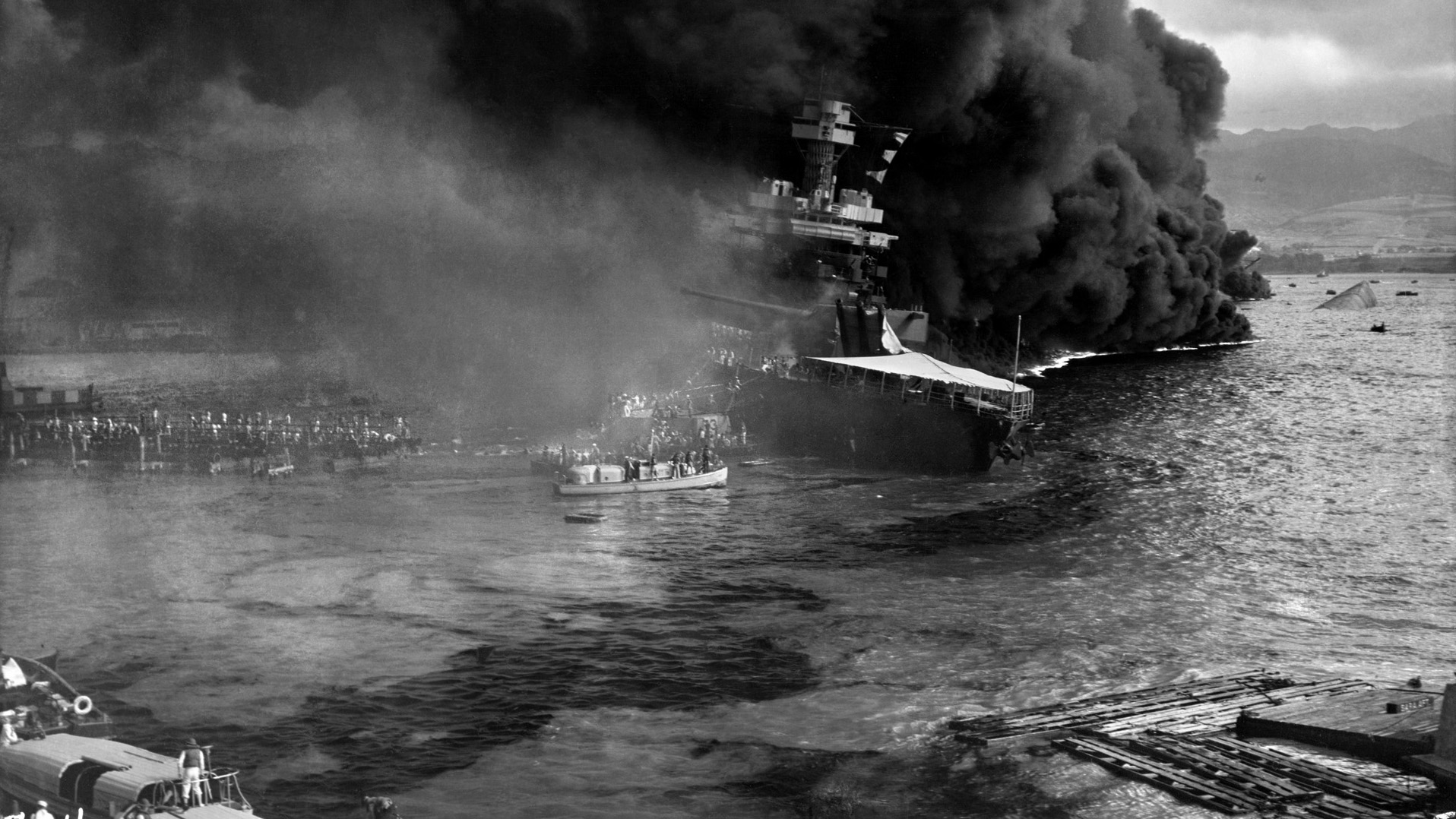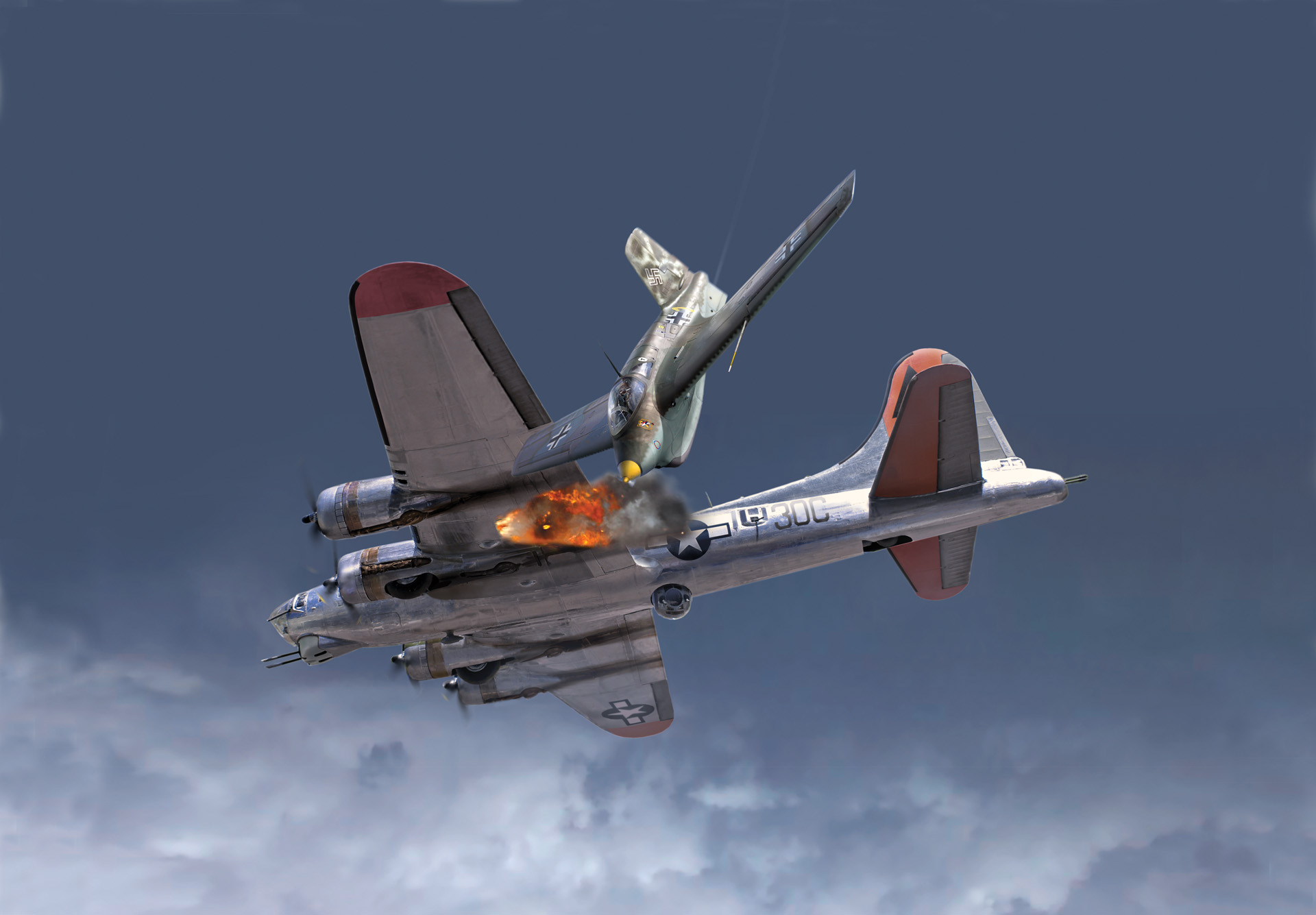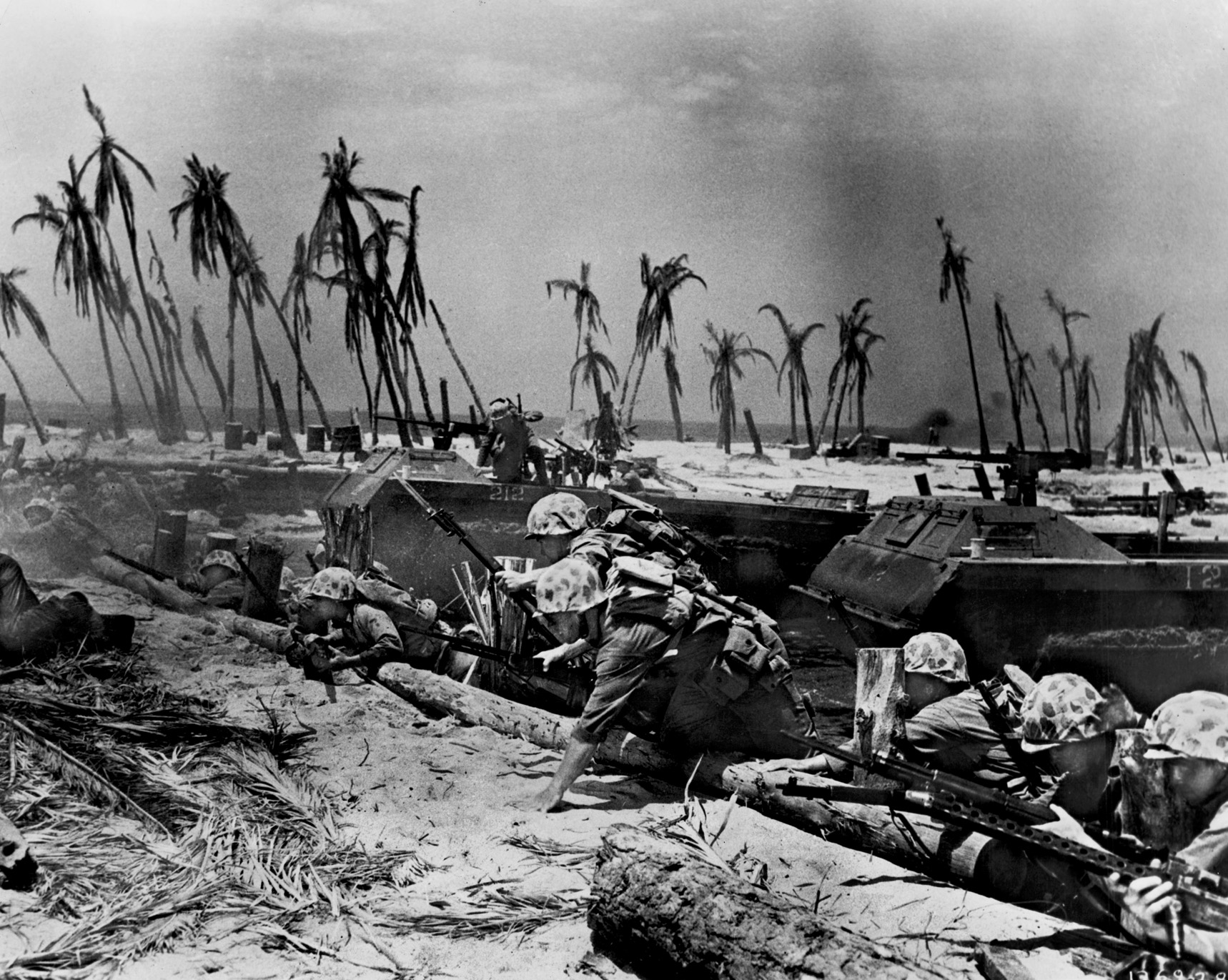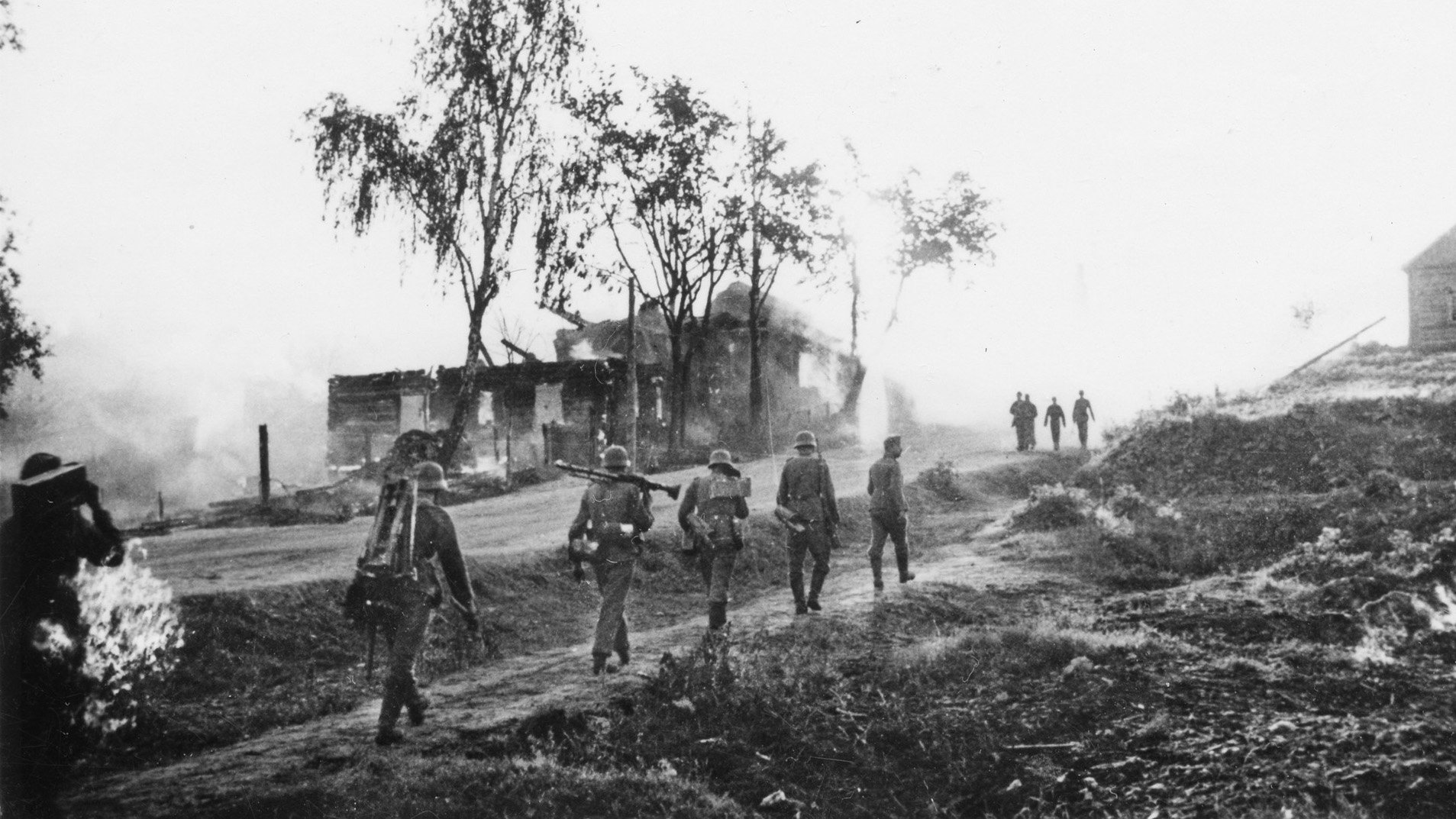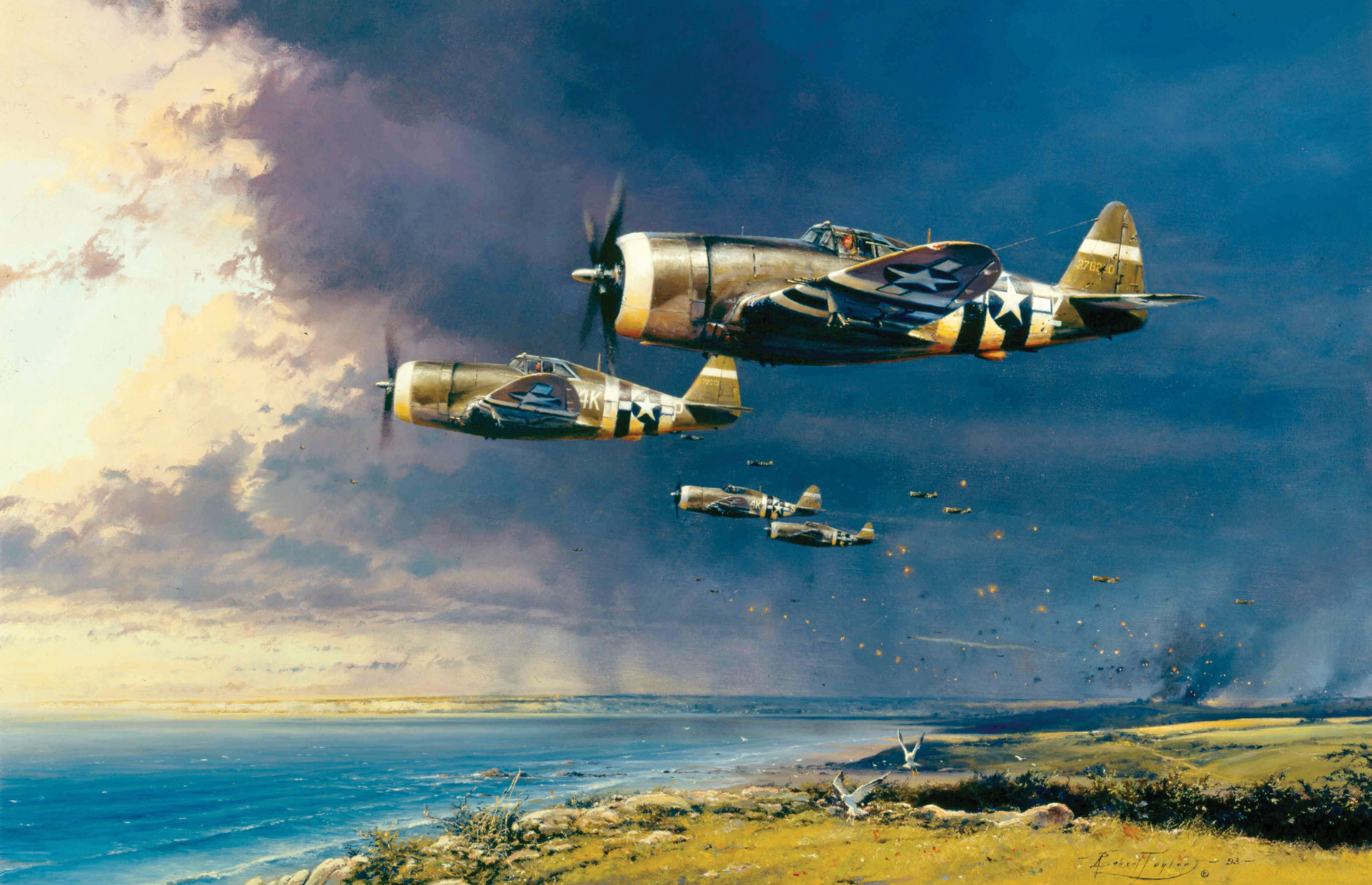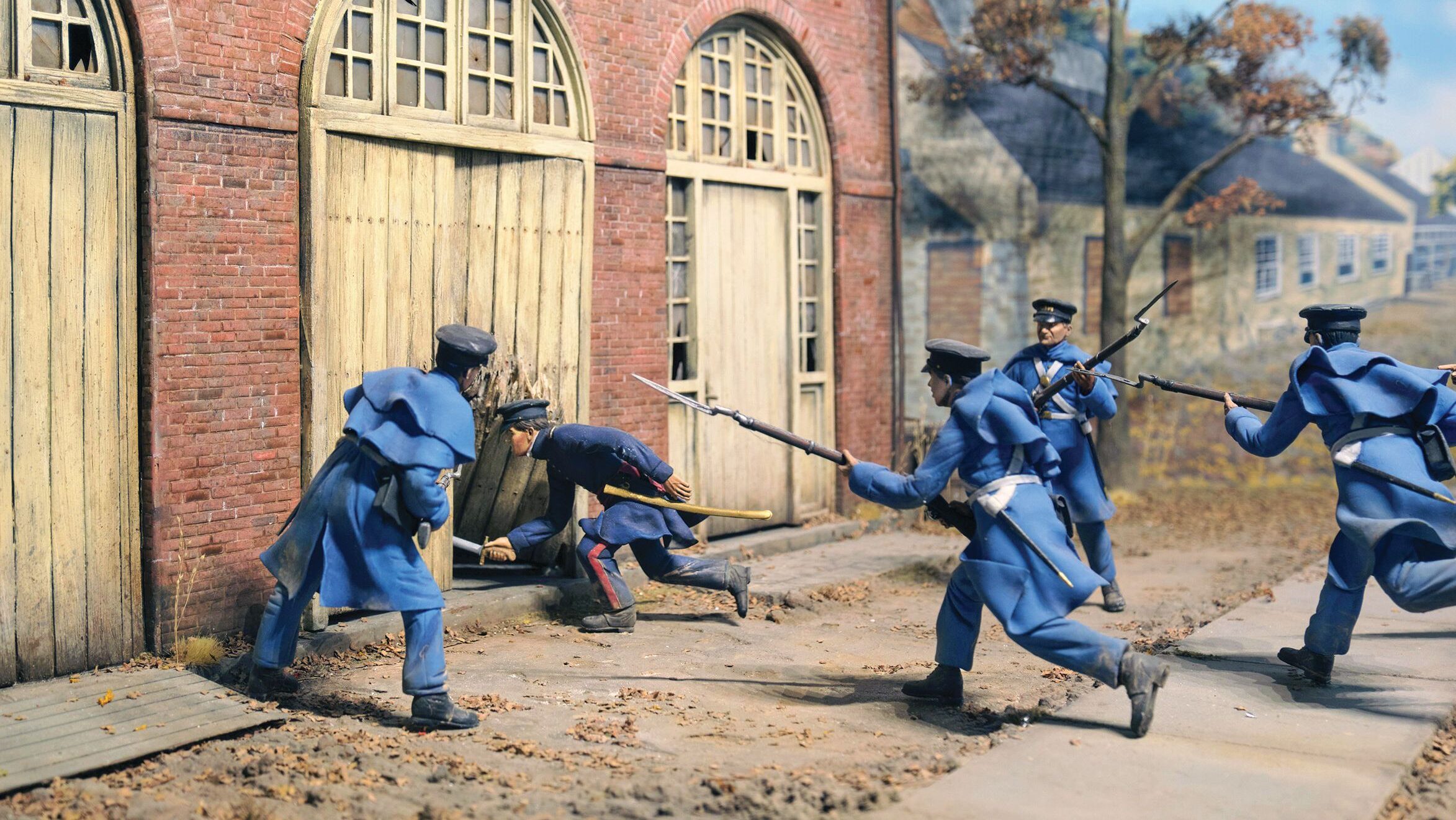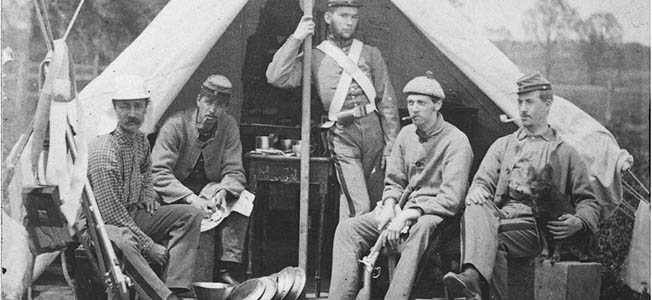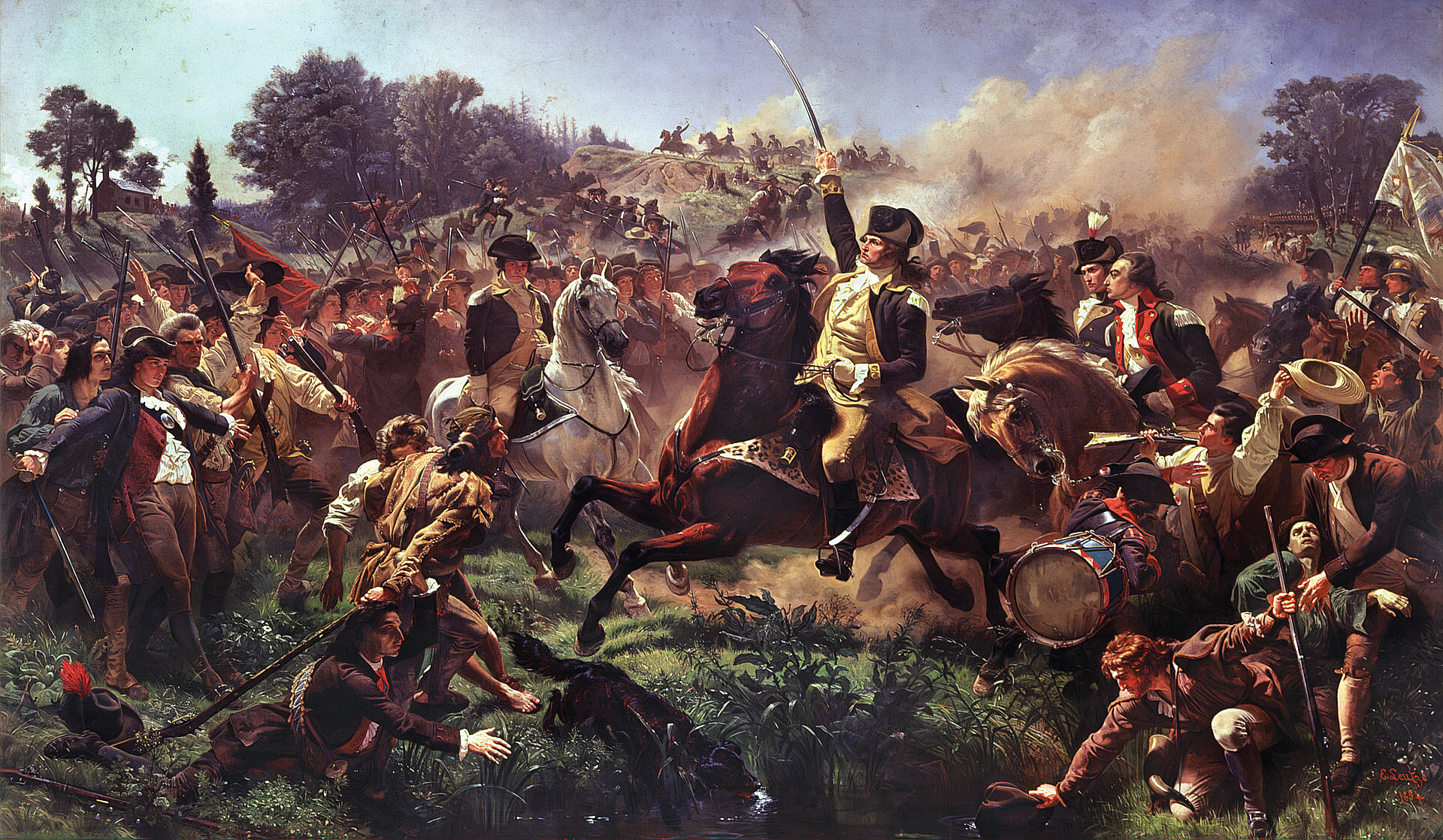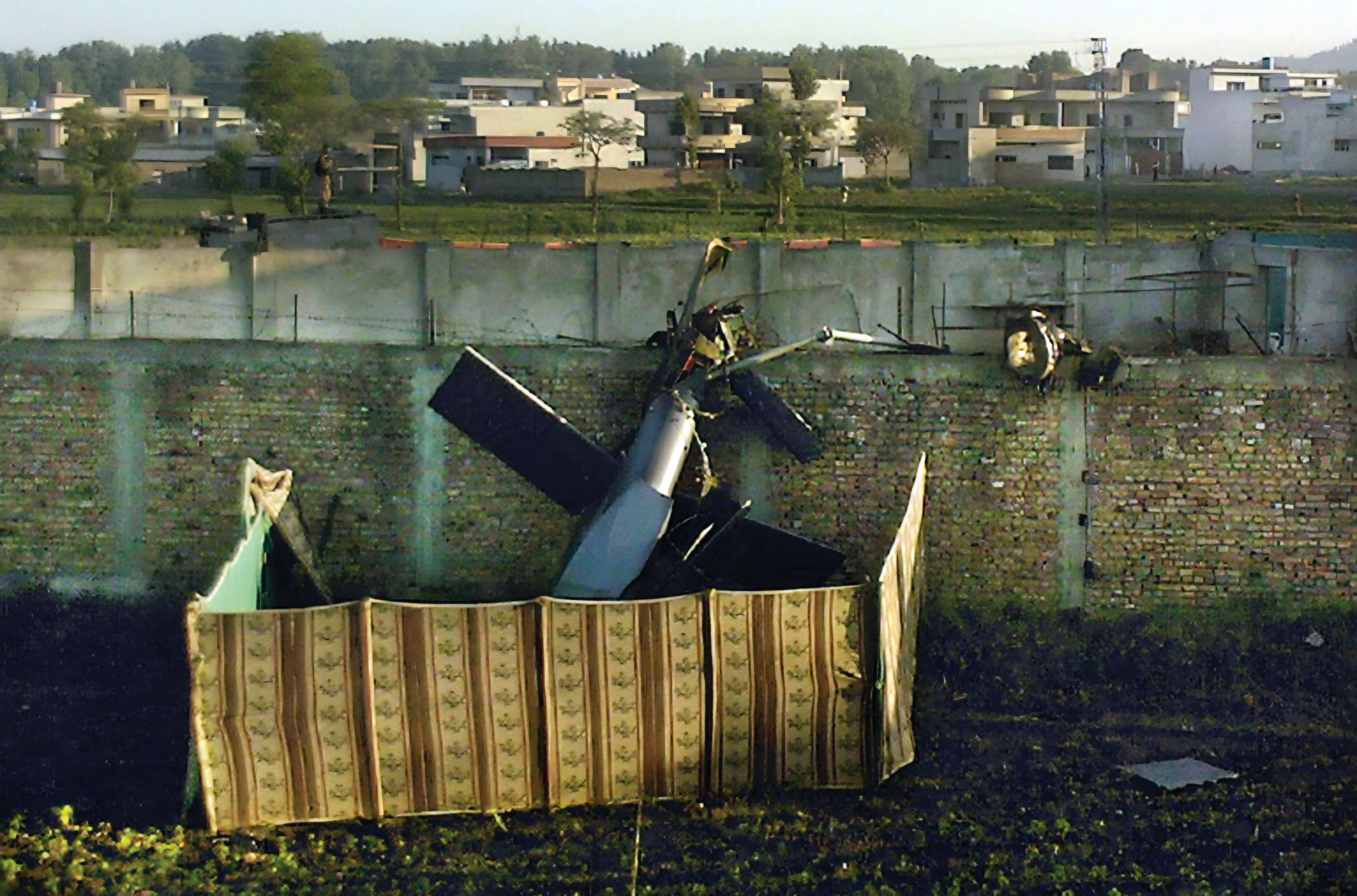by John J. Domagalski
The first rays of sunlight on December 7, 1941, marked a typical Sunday morning for the sailors aboard the battleship USS California at Pearl Harbor. Weather conditions were mostly clear. Although usually a day of rest, the early hours were normally full of activity. Men on the morning watch concluded their duties in preparation for the arrival of their relief at 8:00 am. Sailors slowly awoke in the crew compartments below deck as cooks and mess hall attendants prepared to feed a hungry breakfast crowd.
Two church services—Catholic and Protestant—were to be held one after the other starting at 9:00 am under a sprawling canvas awning set up near the front of the ship. Small boats made ready to ferry sailors to shore for liberty. The men aboard California had no way of knowing that they would soon be in the epicenter of action as the United States was thrust into World War II by a surprise Japanese attack on Pearl Harbor.
The warship had served with distinction for almost two decades. Built at the Mare Island Navy Yard in California, the battleship was commissioned on August 10, 1921, and underwent modernization in 1929-30. Displacing just over 33,000 tons fully loaded, the battleship was 624 feet long. More than 1,000 officers and enlisted men served as her crew. California had recently completed a long stretch serving as the flagship of the Pacific Fleet.
The home of the United States Pacific Fleet for about a year, Pearl Harbor was full of ships and activity by late 1941. On that early December Sunday, California occupied one of the southernmost berths along Ford Island. She was securely tied to mooring posts with her bow pointing south. The seaplane tender Avocet was in close proximity. The fleet oiler Neosho was docked about 500 yards away at the gasoline wharf. Beyond her lay the remaining battleships of the Pacific Fleet, moored along Ford Island’s Battleship Row.
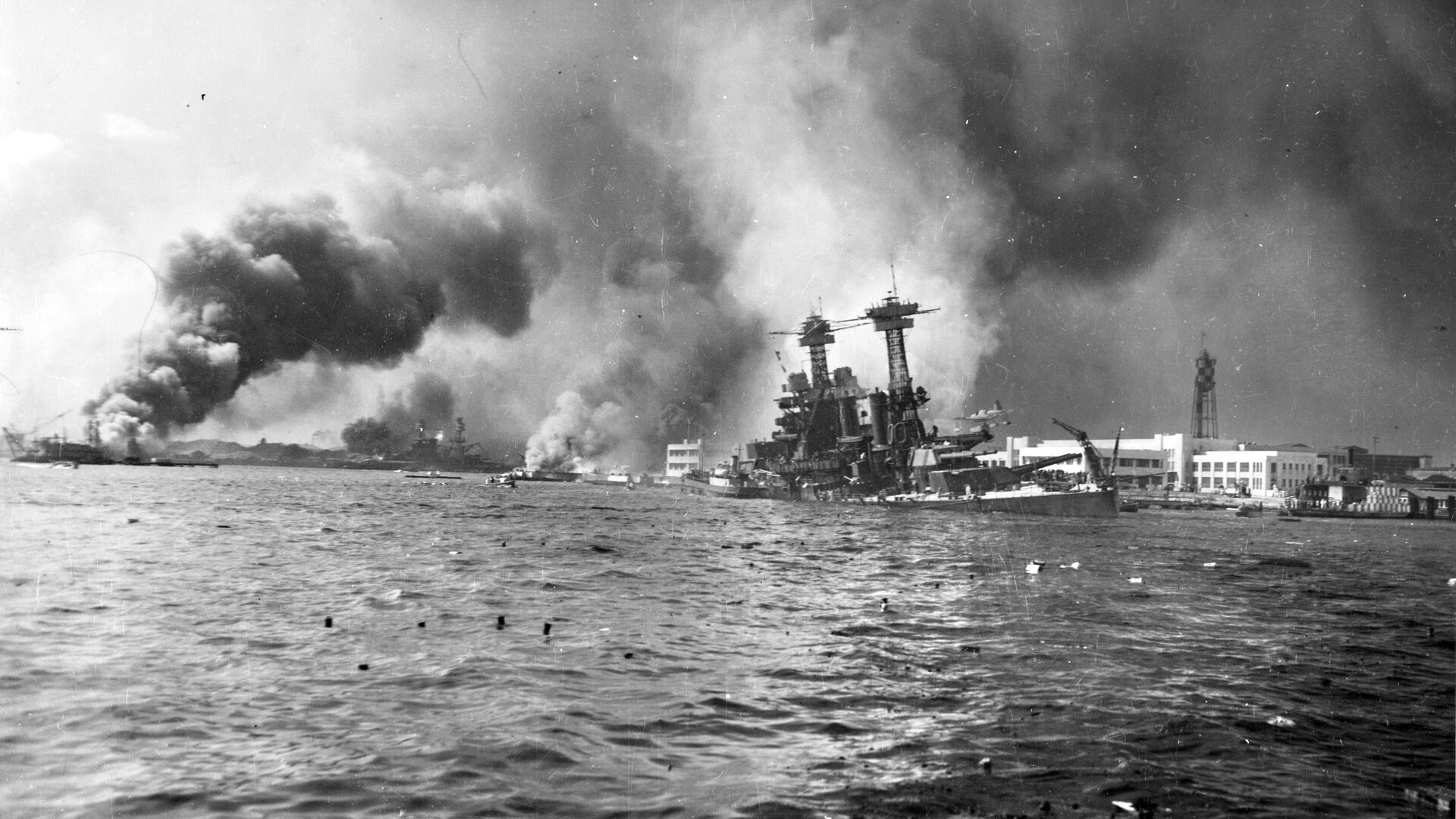
Many key officers, including Captain Joel W. Bunkley and Executive Officer Commander E.E. Stone, were still ashore from the day before. Also absent was Vice Admiral William S. Pye, who was using California as the flagship for his task force of battleships.
The morning found California’s crew in a condition of readiness common for peacetime. None of her 14-inch main battery guns were manned. Fifty shells for each of the battleship’s open-mounted five-inch guns were positioned in nearby ready boxes. The only weapons manned were two .50-cal. machine guns, each equipped with 400 rounds of ammunition. “All other ammunition was in the magazines,” Captain Bunkley later wrote. The battleship was fueled to 95 percent capacity, and one boiler was in use to provide auxiliary power.
Japanese planes arrived over Pearl Harbor just before 8:00 am, simultaneously attacking the area’s air facilities and warships throughout the harbor. The explosion of the first bombs on Ford Island attracted the attention of the sailors aboard California, and General Quarters were ordered at about 7:50 am.
The ringing klaxon jolted the startled crewmen into action. All key fittings were closed and sealed to provide the greatest watertight integrity possible. Sailors rushed to their battle stations all across the ship while others worked to seal the hatches and doors. A voice on the ship’s PA system warned that this was no drill.
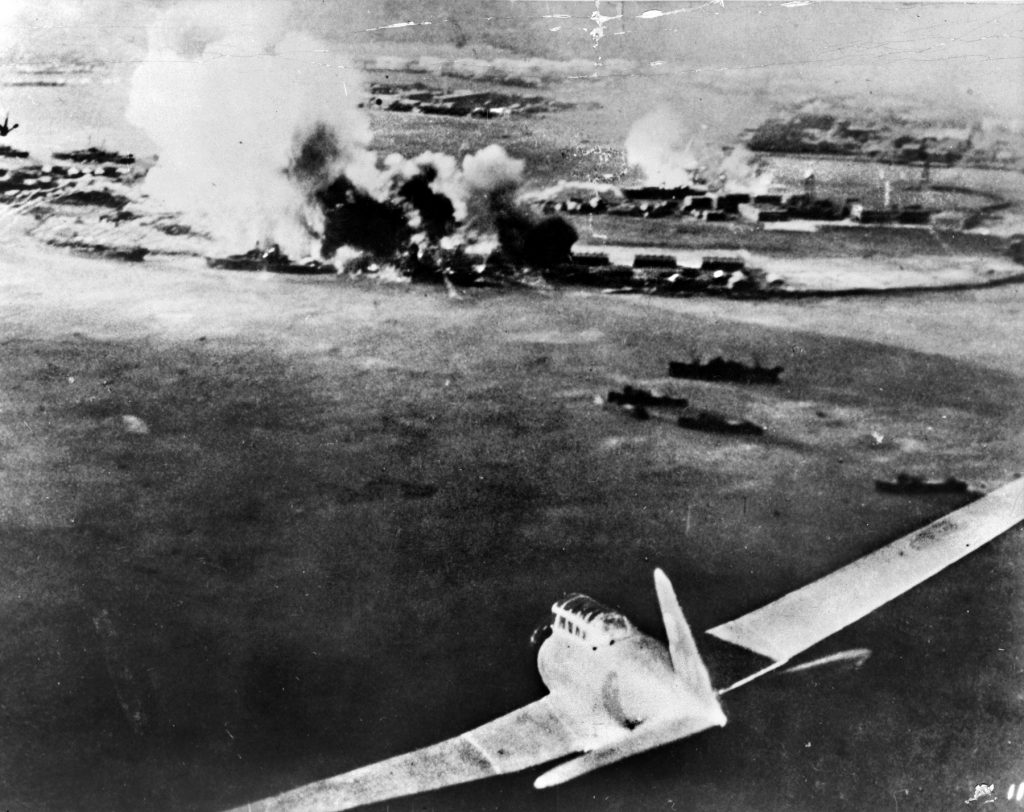
Although it may not have been recognized by many of her crew at the time, California was perhaps in the most vulnerable condition of any battleship in the harbor. She was due for an inspection on Monday, a frequent event for warships with an admiral aboard, resulting in a compromised state of watertight integrity. Preparations had been made for the examination of various tanks and cavities. Six manhole covers leading to the vessel’s double bottom were completely removed, and the screws on a dozen more had been loosened . This arrangement would prove disastrous as the attack unfolded.
Lieutenant Commander M.N. Little was the senior officer aboard California at the time of the attack. He immediately ordered all guns manned and preparations made for getting underway. Lieutenant Commander F. J. Eckhoff, the ship’s navigator, relieved the officer of the deck and began assisting Little. At about the same time, California’s communication officer, Lieutenant Commander H.E. Bernstein, rushed to ensure the keys for the magazines were accessible so that a supply of ammunition could be made available to the guns.
Communication links were established between all key stations, including conn (steering), fire control, and central station. Repair parties and medical teams assembled at their designated posts. By 8:00 am, the main steam lines were warmed in preparation for getting the boat moving.
The battleship immediately came under attack by one or more strafing planes, possibly the same ones that unleashed the first bombs on Ford Island. A group of 24 Nakajima Kate torpedo bombers sped over the harbor’s Southwest Loch heading directly toward Ford Island. Each plane carried a Type 91 aerial torpedo with a 452-pound explosive charge. California’s port side lay fully exposed.
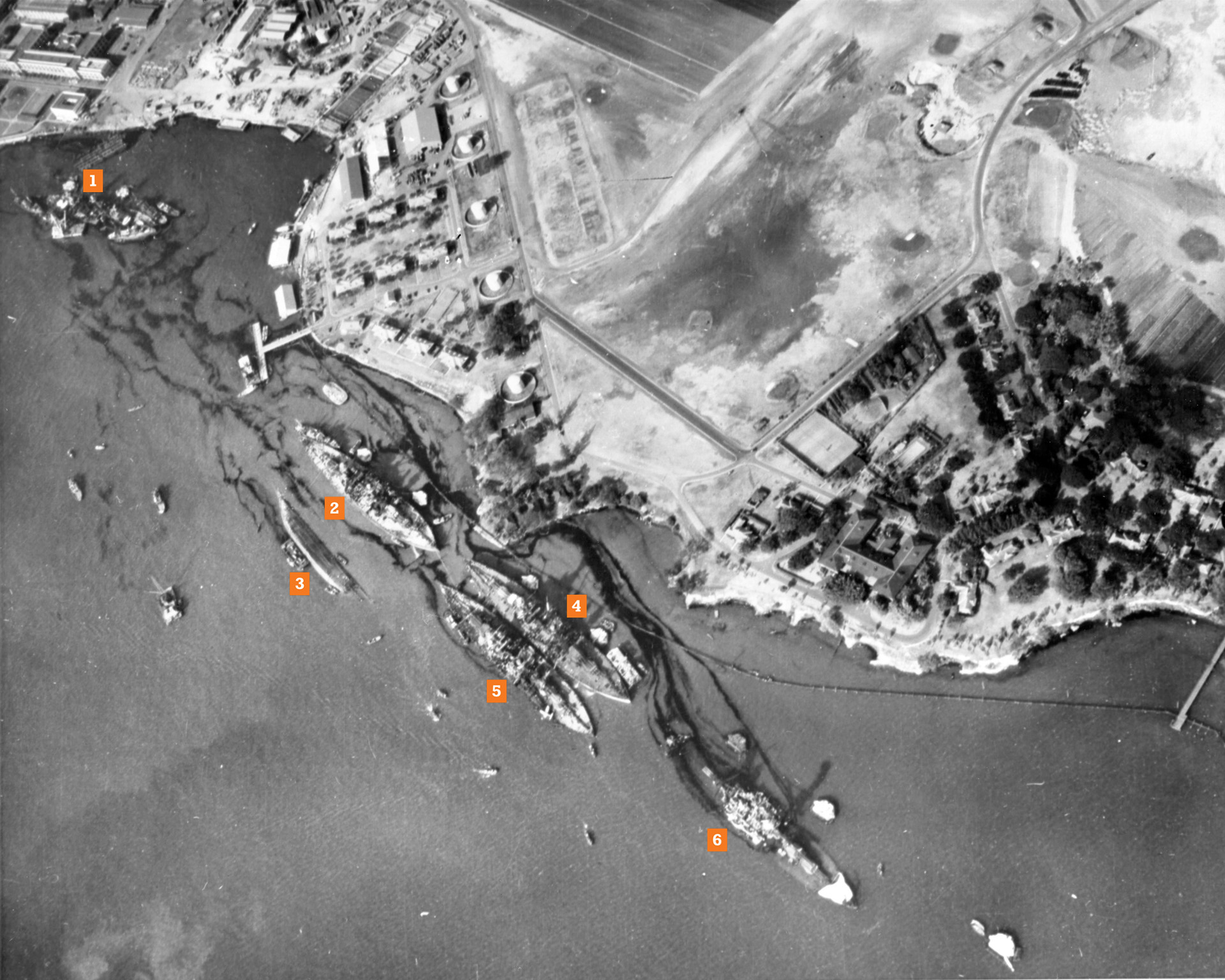
Yeoman Durrell Connor watched helplessly from his position in the flag communications office as an approaching plane dropped a torpedo. He slammed shut the porthole just as the underwater missile struck the ship. The torpedo slammed into the port side of California just forward of the bridge. A second torpedo then crashed further aft, almost even with turret number three, sending up a geyser of water. The battleship shuddered as if her main guns had just fired a full broadside. It was now 8:05 am.
The two ready machine-gun posts were the first weapons aboard the ship to open fire. Two five-inch guns soon joined the action. “The shortage of ammunition immediately available at the guns [was] acute, and orders were issued to ammunition parties to expedite the service of it to the guns,” Bunkley reported. But the ship had been struck by the torpedoes before much effective action could be taken.
Both torpedoes had struck the battleship low, striking below the side armor belt and before full watertight integrity could be obtained. Bunkley noted the effects of the hits were “far reaching and disastrous.” Water rushed into California through the gaping holes and open manhole covers. The ship began listing to port. Quick counterflooding directed by Ensign Edgar Fain kept the battleship from capsizing, but the list reached nearly 16 degrees before subsiding.
The torpedo hits had pierced fuel tanks, sending oil spilling onto the third deck. “The strength of the fumes were such as to overcome the ammunition party attempting to expedite the delivery of ammunition,” Bunkley wrote describing the situation. “The rupture of fuel oil tanks forward introduced water in the fuel system and before it was cleared, light and power was lost on the ship at a critical time. The flooding of compartments in close proximity to the torpedo hits prevented the necessary access to make possible some control of damage.”
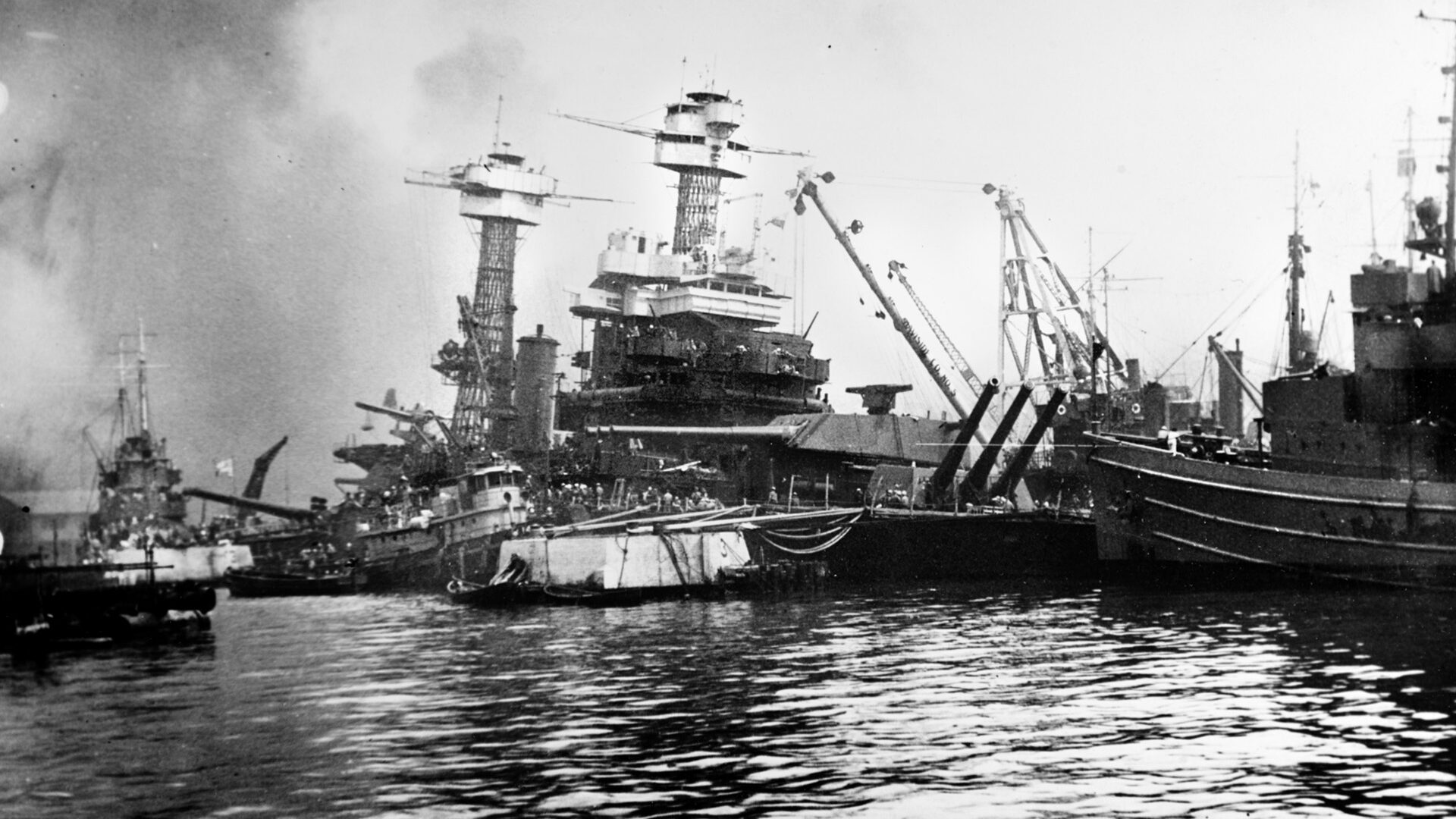
Fire Control issued orders starting at 8:10 am for all available gunnery personnel from the main battery turrets and five-inch guns to help maintain the ammunition supply to the antiaircraft guns that were in action. With all power out, the work continued by hand.
As soon as the torpedo attacks subsided, dive bombers began assailing California. Three separate attacks were made on the ship in an hour’s time, starting at 8:15. Just five minutes later, the vessel was rocked by a near miss off the port bow. The bomb blast caused several compartments to flood in the forward area. Several near misses on the starboard side caused minor damage.
At 8:25 am, another barrage of four bombs fell harmlessly between California’s bow and the mooring quay, causing no damage to the ship. About five minutes later, though, a bomb scored a direct hit on a starboard side casemate just behind turret two. It penetrated the first deck and exploded after hitting the armored second deck. The blast killed about 50 men and started a large fire amidships. “This fire remained largely uncontrolled due to the loss of pressure on the fire main and the lack of sufficient fire extinguishers to cope with it,” Bunkley recorded.
Executive Officer Stone took command after arriving back aboard ship at 8:45 am. Vice Admiral Pye arrived about the same time with several officers of the flag staff. He initially went to the flag bridge. The vantage provided a dramatic view of the destruction that had befallen the entire Pacific Feet. The oiler Neosho had left her precarious position at the gasoline wharf. The battleship Oklahoma had capsized. Battleship Row billowed smoke and flames.
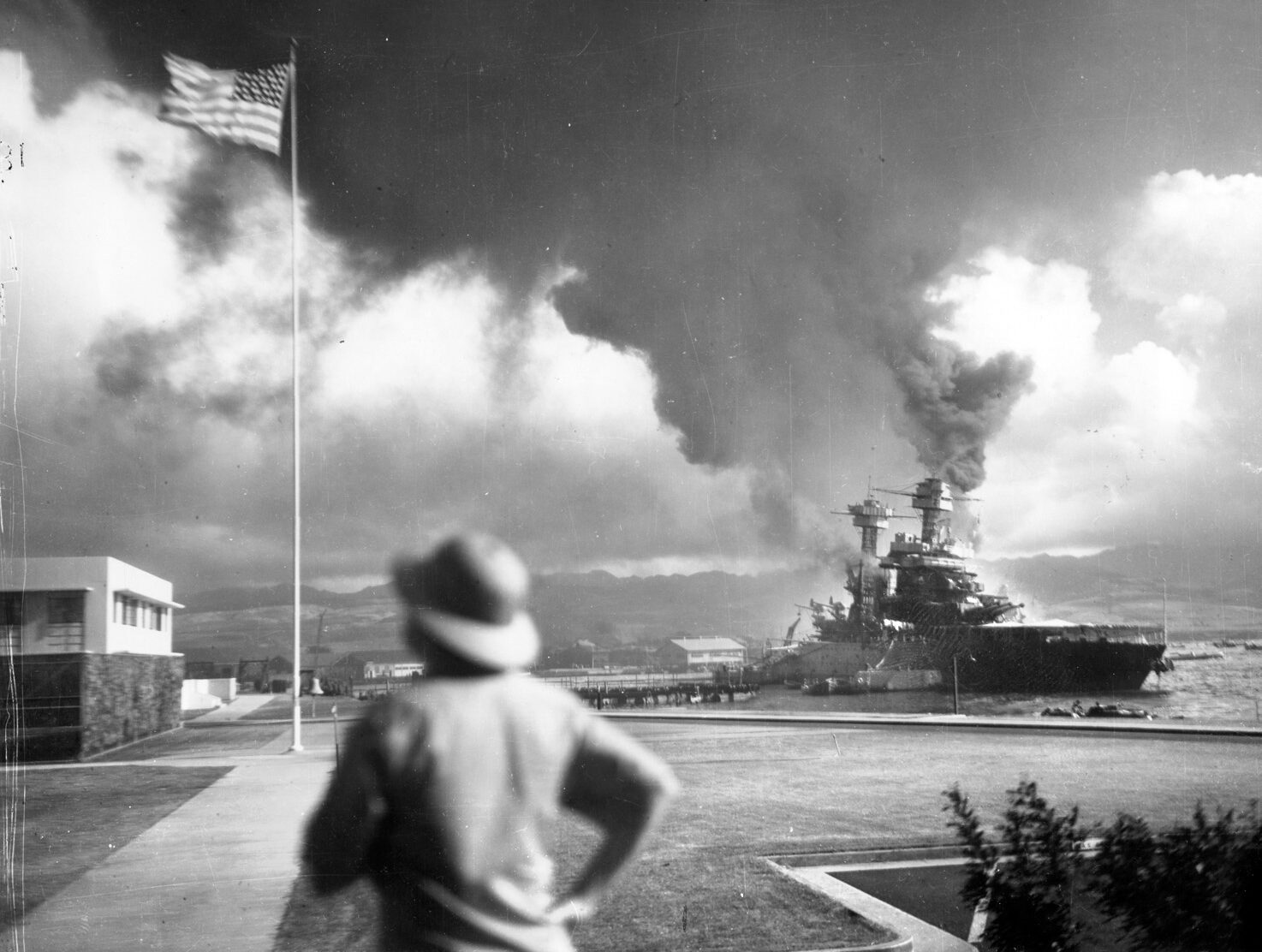
Pye quickly moved to the conning tower for better protection. He soon departed California in a motor launch, believing his flagship would not be able to get underway. Captain Bunkley returned to California with several senior officers at 9:00 am. He immediately took command of the vessel.
But hope was not lost. Heroic work by determined crewmen operating under difficult conditions soon began to yield results. Engineers were able to ignite the four after boilers using cold oil, allowing light, power, and water pressure to be restored at about 8:45. Although damaged and listing, California was amazingly in a position to get underway by about 9:10. However, it was not to be.
Before the captain could issue the order to get the ship moving, a large patch of burning fuel oil floated down from Battleship Row. California’s stern was soon engulfed in flames. The after engineering plant had to be secured again, cutting off power. Bunkley gave the order to abandon ship at 10:02 am. Sailors scrambled to get off the ship, many swimming to nearby Ford Island.
The flaming oil, however, soon moved away from the ship. Bunkley belayed the abandon ship order at 10:15 and directed crewmen to return. With the Japanese planes gone and sailors slowly returning, the struggle to save California continued in earnest. “The fire aboard ship was fought with all available fire equipment on board and such that was obtained from Ford Island — and extensive salvage operations of moveable gear was started.” Bunkley wrote.
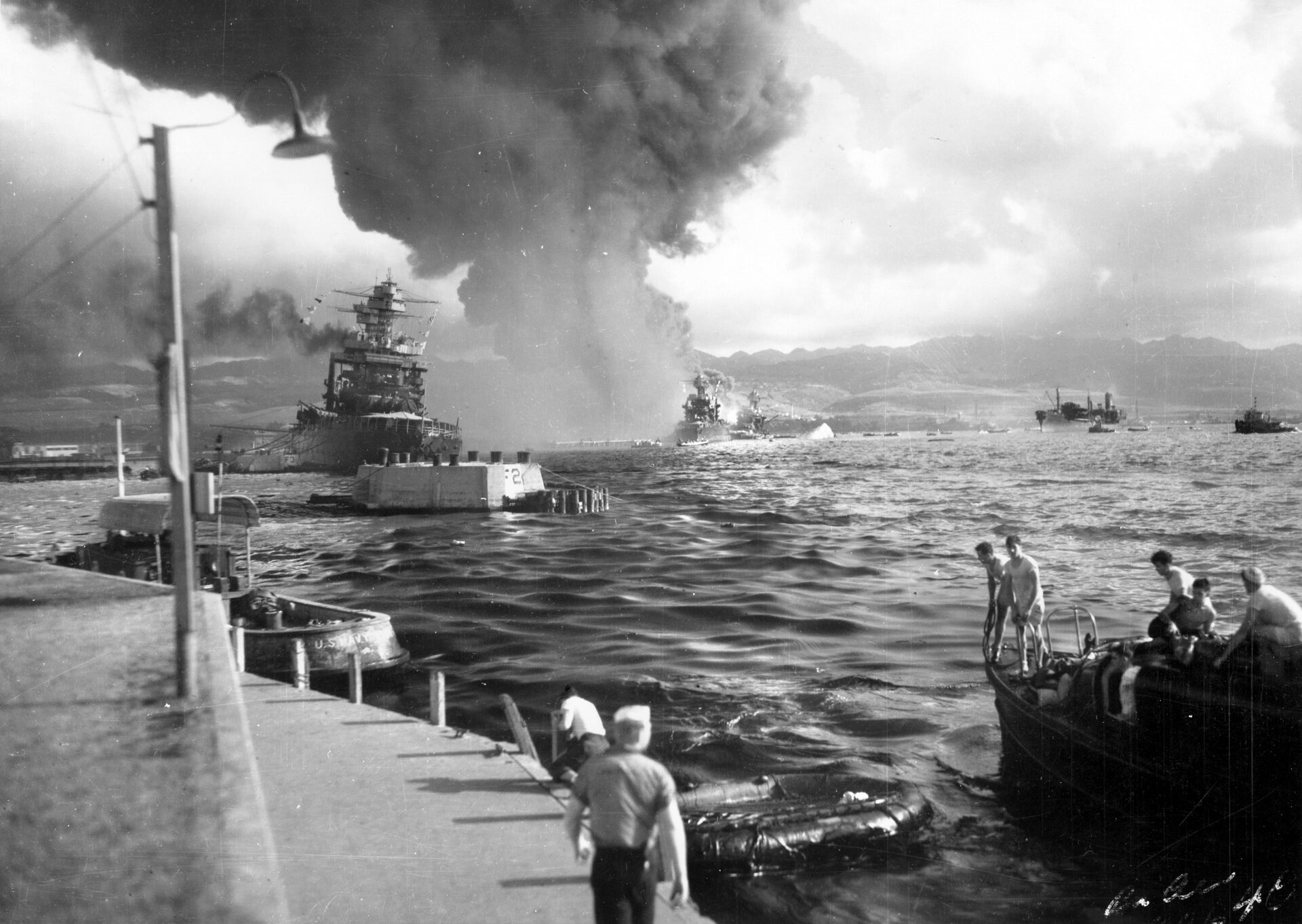
Ensign E.R. Blair, Jr., was in his quarters when the general alarm sounded. “The first torpedo struck as I left the bunkroom, quickly followed by the second,” he wrote. “[Watertight integrity] was already set on the main deck hatches so that in order to get topside I opened the escape hatch.” Finding two officers already in control of the five-inch batteries, Blair rushed to the gun directors only to find both were inoperative.
“On the way to sky control I had noticed that machine guns number one and number two were firing but were short of ammunition.” He quickly gathered a group of 10 sailors to bring ammunition to the machine guns from the magazine and ventured below deck. “We opened the amidships forecastle hatch, which led to the shaft leading to the forward torpedo hold. We were under attack at the time but the men paid no heed to the enemy planes and worked quickly and eagerly.” The sailors had to open five sealed hatches to get to the ammunition. Blair realized it was dangerous but later commented, “I believed that the need for the ammunition warranted the risk involved.”
Blair knew it would be difficult to get the bullets topside due to the damage and flooding. “I broke out the belted ammunition, about 1,600 rounds, distributed it among eight men, 200 rounds to a ready box, one ready box to a man,” he continued. “To each man I designated a station to which he was to take his ammunition.” The runners proceeded with great difficulty, climbing up ladders in narrow shafts as the battleship began to list. Each, however, was able to make it topside.
Blair remained below deck with the other men. The small group began to belt up more ammunition, but the area was suddenly rocked by a bomb hit. “Two glass gauges broke and diesel oil ran out on the deck,” he said. Blair closed the valves and momentarily thought it would be a good idea to remove all glass gauges from battleships. “There was a leak forward and we could hear water running close at hand. I was determined to get as much ammunition out as was possible and belt it above decks.” The young officer directed several nearby sailors to go topside with whatever ammunition could be carried and ordered another to try to remove the clipping machine before leaving the area himself. “He had it half unfastened when I left,” Blair noted of the apparatus. The machine, however, never made it out of the compartment.
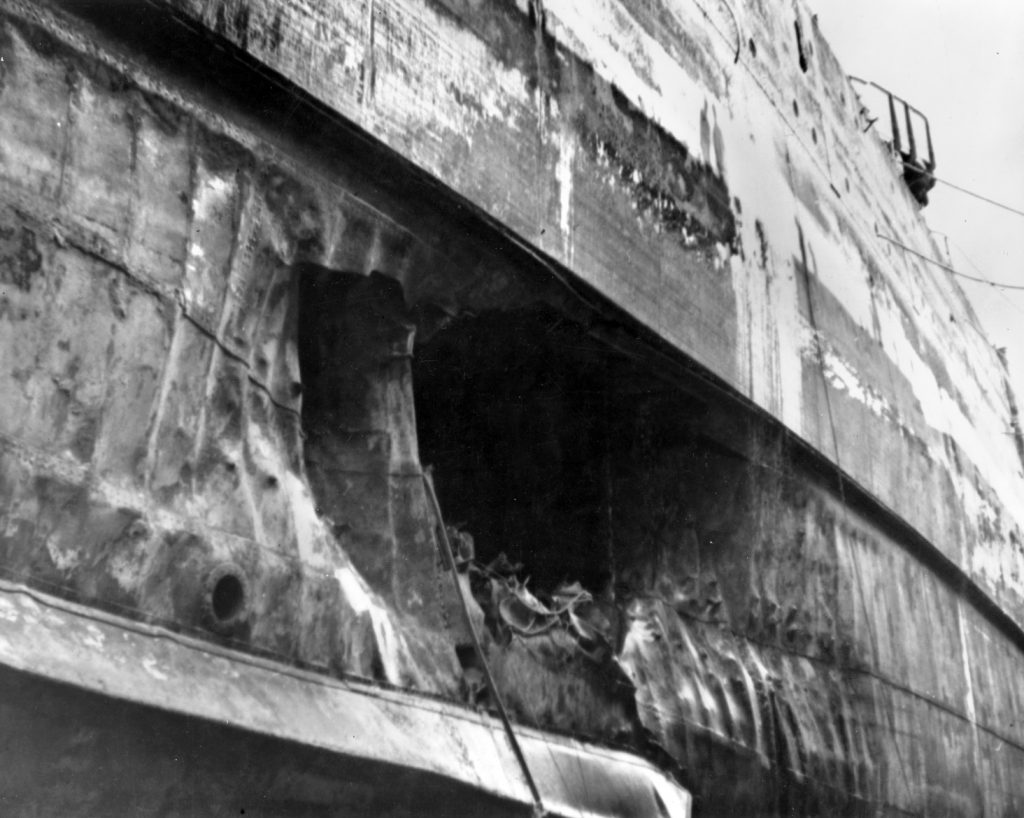
Blair arrived topside to a scene of utter destruction. He saw dazed men crawling out of a hatch on the starboard side. Some were badly burned. Smoke trickled out of a bomb hole near a five-inch gun. “On the main deck near the forecastle hatch amidst smoke and debris was the [machine gun] ammunition scattered over the deck with a dead man beside each ready box.” Two full ready boxes were found nearby and immediately dispatched by runner to the gun mounts. “I returned to the maintop hoping to find the clipping machine and the boxes of loose ammunition brought out last from the magazine,” Blair wrote. However, he only found two boxes that had been brought up by exhausted seamen. “We turned to belting the ammunition by hand.”
The abandon-ship order was given before much work could be completed. Blair reluctantly left the warship in company with Ensign B. C. Hall.
Gunners aboard California were able to extract a small amount of revenge against the enemy. Her five-inch batteries and .50-cal. machine guns fired away at attacking planes throughout the morning. A dive bomber was seen to go down in flames at about 8:30 after taking machine-gun fire. A few minutes later, heavy fire from California and several nearby ships combined to shoot down a plane over Ford Island.
Selfless acts of unparalleled heroism and bravery undoubtedly took place all across the warship as the morning attack unfolded. Sadly, many are destined to remain undocumented forever. The actions of a trio of brave sailors, however, have been preserved. All three were awarded the Medal of Honor for their actions, but only one survived the attack.
Machinist’s Mate First Class Robert R. Scott’s battle station was the forward air compressor station. The position provided air pressure for the five-inch guns. Scott refused to leave his station when the compartment began to fill with oil and water immediately after the forward torpedo hit. He reportedly told his comrades, “This is my station and I will stay and give them air as long as the guns are going.” Scott died at his post.
Ensign Herbert C. Jones jumped into action as soon as the attack began. He rescued a sailor from a smoke-filled compartment before directing fire from an antiaircraft gun. When the loss of power stopped the ammunition hoists, Jones organized a group of sailors to pass shells by hand. Fatally wounded by a bomb hit, he refused evacuation and instead directed his would-be rescuers to leave the area before a nearby magazine exploded.
Gunner Jackson C. Pharris was in charge of an ordnance repair party on the third deck. The first torpedo exploded directly under his position. The force of the blast hurled him into the overhead of the compartment. Pharris was stunned and injured, but quickly sprang into action and set up a human chain to pass antiaircraft ammunition. He later directed sailors to begin counterflooding shortly after California began to list.
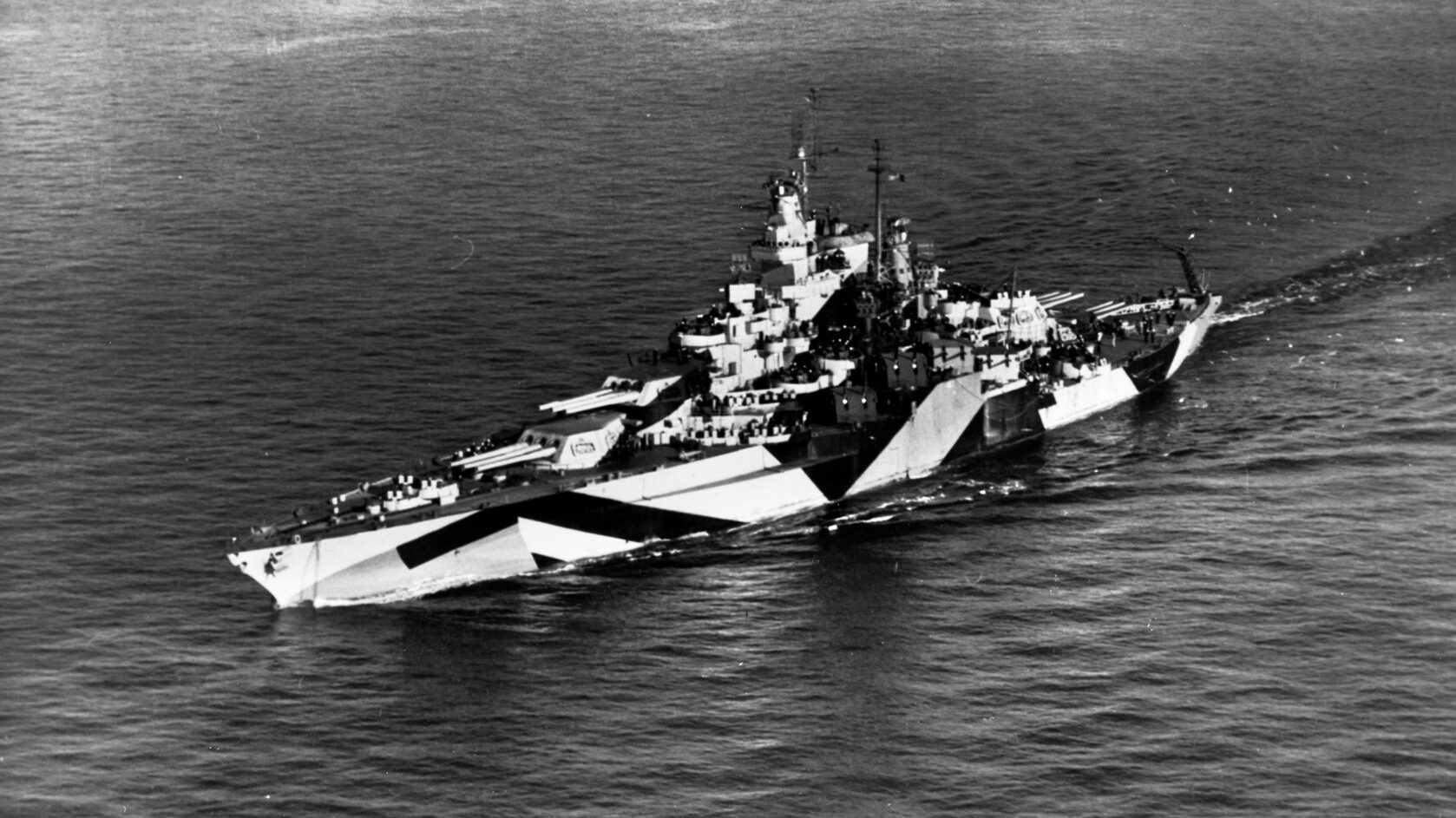
His award citation describes what happened next. “Twice rendered unconscious by the nauseous fumes and handicapped by his painful injuries, he persisted in his desperate efforts to speed up the supply of ammunition and at the same time repeatedly risked his life to enter flooding compartments and drag to safety unconscious shipmates who were gradually being submerged in oil. By his inspiring leadership, his valiant efforts and his extreme loyalty to his ship and her crew, he saved many of his shipmates from death and was largely responsible for keeping the California in action during the attack.” Pharris survived the attack and the war. Initially awarded the Navy Cross for his actions at Pearl Harbor, it was upgraded to the Medal of Honor in 1948.
Throughout the day, medical men and volunteer sailors aided the wounded, working to move the injured and providing first aid. The more serious cases were eventually transported to hospital facilities ashore. A total of 98 crewmen died in the attack, and 61 were wounded.
The minesweepers Vireo and Bobolink closed on California late in the day to render additional assistance. The small ships poured water on the fires and transferred much-needed emergency equipment. A combination of battle damage, open watertight fittings, and ruptured ventilation ducts made stopping the inflow of water a difficult undertaking. Fading daylight found crewmen working heroically to prevent California from sinking.
The struggle to keep California afloat continued in the days following the attack. The valiant effort, however, came to an end late on December 10, when the battleship came to rest on the harbor floor. Her decks lay awash, with only her superstructure remaining above water.
The battleship was raised on March 25, 1942. After initial repairs at Pearl Harbor, she sailed under her own power for Bremerton, Washington. On the last day of January 1944, the reconstructed California set sail on a shakedown voyage. She eventually returned to the Pacific War and supported operations at Saipan, Guam, Tinian, the Philippines, and Okinawa. She participated in the Battle of Surigao Strait in October 1944, and she was hit by a Japanese Kamikaze plane in early 1945. The best-known aspect of her long career of service, however, will always be her desperate fight for survival at Pearl Harbor.
California was taken out of service in 1947 and sold for scrap in 1959.
John J. Domagalski is the author of three books on World War II. Into the Dark Water: The Story of Three Officers and PT-109 (Casemate, 2014), Sunk in Kula Gulf (Potomac Books, 2012), and Lost at Guadalcanal (McFarland, 2010). His articles have appeared in WW II History, Naval History, and WW II Quarterly magazines. He is a graduate of Northern Illinois University and lives near Chicago.
